 Leading Blog | Posts by Month |
 Leading Blog | Posts by Month |
02.28.18

LeadershipNow 140: February 2018 Compilation
See more on
Posted by Michael McKinney at 12:36 AM
02.26.18

Talent Magnet: How to Get and Keep Top Talent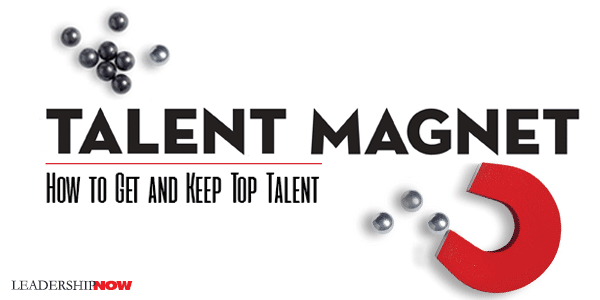
I Too many organizations find themselves in the positon of not being able to find enough qualified people to meet their growth goals. To answer the question, what attracts top talent, author and Vice President of High Performance Leadership at Chick-fil-A, Inc. Mark Miller commissioned a research study to interview over 7000 people from age fourteen to sixty-five and included both professional and hourly workers across all educational backgrounds. The result is Talent Magnet. Talent Magnet looks at the talent predicament from both sides—both those seeking work and those recruiting workers. It is the story of CEO Blake Brown who finds that they have a talent crisis and begins a journey to discover what it takes to find and keep top talent. It is also the story of his son Clint and his friends who are looking for a great place to work. What they discover is that what top talent wants and what organizations need to provide is a Better Boss, a Brighter Future, and a Bigger Vision. These concepts are all broken down in the story, but the diagram below provides an overview. 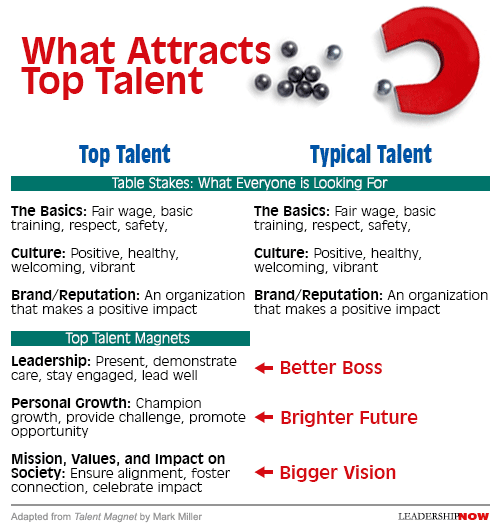 You don’t advertise that you're trying to attract top talent, you simply create the culture that top talent is looking for. “If you build it they will come.” You make people aware by practicing the qualities that make a top talent culture—Better Boss, a Brighter Future, and a Bigger Vision. An organization’s leadership must understand their individual roles in delivering on the promise. On their journey to discovery, they realized that “Many looking for work will be indifferent to our message, but Top Talent will resonate deeply with our story.” The promise should run through all of your corporate communications: engaged, caring leadership, champions of growth and opportunity, and a connection to a larger story that impacts society. The Top Talent Magnets are universal; they are not gender or age specific. People may leave and move on and take their skills with them. Each job is a learning opportunity. And you want people with that kind of mindset because that will serve you best. When your goal is to help your people learn the skills that will serve them the rest of their life, then you are more likely to attract and retain top talent that will drive your organizational goals. Blake concludes, “Working with people is the most challenging and rewarding part of being a leader. We can never shirk the responsibility. It comes with the job. If we abdicate our people responsibilities, we forfeit our leadership. People must always be our top priority. More than vision, strategy, creativity, marketing, finance, or even technology, it is ultimately people who determine our success.” 
Posted by Michael McKinney at 09:42 PM
02.23.18

Blowing Past Our Limits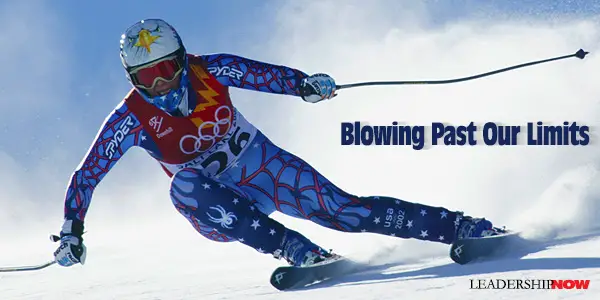
W We do not come to our potential without struggle. Most of life is not under our control, but that’s where our opportunity lies. Courage can push us beyond our imagined limits. Courage leads to the persistence required to practice consistently to a desired end. The most common fear leader's face is the fear of failure. You will face moments when you want to back down because everything inside of you says, “Don’t take the risk.” It is in those moments that your decision to hold back or jump will determine the defining moments of your life. When we look back over our lives, the extraordinary moments, the turning points in our lives required pushing through the fear. Our potential is just beyond our fear. Courage requires clarity, energy, direction, and action. Courage means taking the first step into the unknown that begins the process to a positive, desired end. When we demonstrate courage, we open the doors to other virtues like humility, kindness, patience, and persistence. All require courage. Courage is contagious. Billy Graham said, “When a brave man takes a stand, the spines of others are stiffened.” If we, as Street said, have the courage to blow past our own limits and step into a new place, we will encourage others to do the same. People feel our courage and will, in time model courage in their own lives. We owe it to those we lead to face uncertainty and the accompanying risks and blow past them. What courageous action should you take today? This post is adapted from the LeadershipNow newsletter: Lead:ology February 2018. Take a moment to add yourself to the e-mail list.
Posted by Michael McKinney at 08:18 AM
02.21.18

Key Tips for Bridging the Generational Divide in the Workplace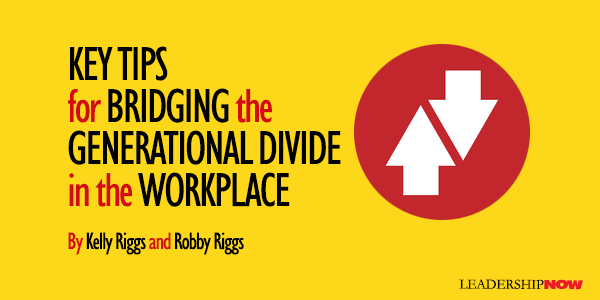
M The clash of perspectives, with the Boomer generation craving the comfort of a hierarchical organization and Millennials demanding inclusion and collaboration, impacts the bottom line. Millennials will abandon any job if the culture their manager has created is unworkable for them. If it means more than six jobs in ten years, so be it. But such turnover is costly. Research shows the average cost of employee turnover is about 20 percent of the employee’s annual salary. Other costs of not adapting leadership styles for your younger employees are harder to quantify, including lost knowledge, relationships, opportunities, and more. Transforming from an entrenched and unworkable generational disconnect into a dynamic organization able to face 21st century challenges collaboratively requires key actions, including: 1. Reassess attitudes toward junior employees. Boomers and Millennials have distinct differences in how they act and how they want to be regarded in the workplace. These differences are potentially lethal to your business, particularly when leaders aren’t prepared to make the most of the talent and innovation the young employees bring. Strategies that move managers, supervisors and executives away from being simply directors to become “people developers”—coaches, motivators and listeners—will serve in providing the collaborative culture Millennials crave. And management will realize that all generations in the organization respond better to relational leadership opposed to directives and demands. 2. Realign workplace expectations. Boomers remain in the mindset that junior employees have to pay their dues and show respect, just as they had to do. But Millennials expect their supervisors to understand the amazing life experiences and skills they bring. They value autonomy, flexibility and opportunity to express their opinion. Leaders are challenged to clearly communicate expectations and standards and allow the young employees to take ownership of their work. This means treating them as owners, not renters. Treating them like renters allows them to do the minimum amount of work and expect others to fix any problems. Owners, on the other hand, have skin in the game and own their part of the overall results. 3. Capitalize on new skills. Companies who can effectively bridge the generation gap through leadership strategies that harness the potential of Millennials will create a competitive advantage. After all, the young employees are yearning for personal value in their work and the opportunity to contribute to something that matters. The alternative is that the manager—and the organization—become irrelevant.  
Posted by Michael McKinney at 06:30 PM
02.19.18

The Little Kindnesses Matter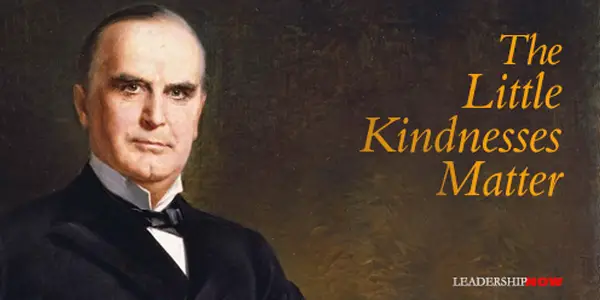
P He was considering the appointment of a minister to a foreign country. There were two candidates. The President outlined their qualifications, which seemed almost identical. Both were able, experienced, honest, and competent. Each was equally entitled to preference from a political standpoint. Then he told this little story, an incident apparently so unimportant that, except for its consequences, it never would have been told, an incident so trivial that the ordinary man would have forgotten it. But McKinley was not an ordinary man.Dawes relates this lesson: We never know what determines one's career in life. Indeed, it may be these little-forgotten deeds, accumulated, are the more important factors; for it is they which must, in many cases, provide us with the opportunity to do the greater deeds, and we unconscious of it. Why comes this reward in life? Why that disappointment or failure? We cannot know with certainty. This we can know, however, and this story illustrates it: There is no act of kindliness, however small, which may not help us in life; and there is no act of unkindness, however trivial, which may not hurt us. More than that: The habitual doing of kindness always adds to our happiness, for kindness done is duty performed. Unkindness always breeds an unhappy spirit, for unkindness is duty neglected.Malcolm Forbes once said, “You can easily judge the character of a man by how he treats those who can do nothing for him.”
Posted by Michael McKinney at 05:01 PM
02.15.18

3 Strategies to Prepare Your Millennials for Their Leadership Roles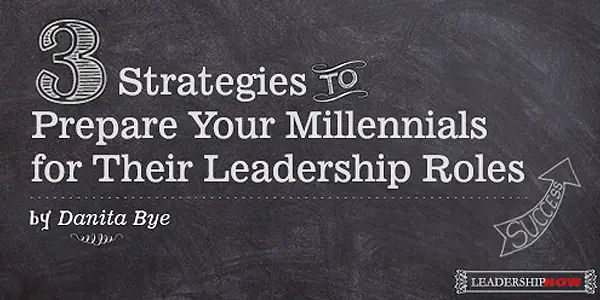
M Consider these three action steps as you prioritize Millennial leadership development. 1. Boost Accountability by Strengthening Character A lack of determination and resilience, low accountability and, a know-it-all attitude were some of the character concerns raised by 270 business owners and CEO’s who participated in our Millennial Survey. Our sales force development work also indicates that 60% of sales professionals often play the blame-game. They adamantly inform management that the reason they aren’t hitting their numbers is due to the economy, the competition, the weaknesses of their company, or a combination of all of these. This externalized perspective is futile. It robs the complainer of their growth potential. How can we be proactive in developing strong character in our up-and-coming leaders? Take action:
2. Build Confidence by Leveraging Strengths Some Millennials believe they possess an unlimited well of knowledge just because they are able to find the answer to just about any question on Google or YouTube. This phenomenon is validated by research. Yale doctoral candidate, Matt Fisher, and his colleagues Mariel Goddu and Frank Keil, conducted fascinating research on this topic. They asked people a series of questions that appeared to be general knowledge but were actually difficult to answer. Some of the participants had access to the internet and others not. They published their findings in an article, “The Internet Makes You Think You’re Smarter Than You Are.” [Interview] They came to the conclusion that head knowledge lacks the deep roots of real-life experience that provides the confidence to stand in any storm and press through any obstacle. Take action:
3. Maximize Collaboration by Aligning Core Purpose I was inspired when I first learned about the process, Life’s Core Purpose, developed by Jeff Pelletier. It is a powerful mentoring tool to help your Millennial leader get a deeper understanding of where they can create win-win synergy. Their best synergy is when their vision and values align with the company’s vision and values. Life’s Core Purpose process invites leaders to serve at the intersection of their core competence and core passion by asking: “Is there something I am personally great at all the time at a core level? And, is there something I care deeply about all the time at a core level?” The goal is to apply what we do well to what we care about deeply so that performance can accelerate! Take action:
Will you be left high and dry when your Baby Boomers retire? If you are concerned about filling the voids left by your experienced Baby Boomers, it’s not too late. Step up and take action to implement real-world, rubber-meets-the-road leadership development strategies. Prioritize time to transfer skills, knowledge, and experience to boost accountability, build confidence, and maximize collaboration in your up-and-coming leader so that your business will thrive even after your last Baby Boomer has retired.  
Posted by Michael McKinney at 09:18 PM
02.13.18

Creating Great Choices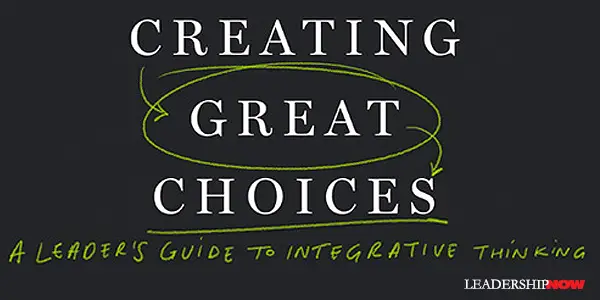
O If we understand that we all have different mental models—our view of how the world works—we use those various models to improve our own. Once we see things in a certain way, it becomes very difficult to see things in a new way. Integrative thinking is a method to do just that. Roger Martin introduced the practice of integrative thinking in his book, The Opposable Mind. “The opposable mind is one that can use the tension between a set of ideas to create new and superior answers to challenging problems. This follow-up book, written by Martin and adjunct professor Jennifer Riel, Creating Great Choices, provides the methodology to do just that. Martin finds that there are three elements missing from most decision-making processes: metacognition, empathy, and creativity. When employed, metacognition allows us to understand better our own thinking and existing mental models that influence our decisions and the choices available to us. Empathy allows us to understand the thinking of others, which in turn illuminates the gaps in our own thinking and areas where we might connect with others. Finally, creativity provides the imaginative spark to create new and better choices rather than just accepting the options held in tension before us.
Articulate the Models Step one is to Articulate the Models, that is “to frame the problem and tease out two opposing models for solving it.” What are the core elements of each model? The idea is to create a two-sided dilemma from a general problem like whether to use a centralized structure versus a decentralized structure or consumer needs versus shareholder expectations. Ultimately you will not choose between the two, but to use the two models or approaches to create a better choice. The outcome we will look for, won’t be a compromise between the two choices, but a choice that takes the best of both that will produce an outcome that is preferable to the existing ones. Examine the Models Step two is to Examine the Models. While holding them in tension, define the points of tension between the two models or approaches, illuminate the assumptions, and determine the cause-and-effect forces. As you look at the models, ask, what are the forces that drive the most important outcomes or the benefits we most value of each? How might we change how we think about the approach? What is similar? What is different? What benefit would you be loath to give up from each model? Now you want to shift from understanding the models to creating new models, “creatively building from both opposing models to design an answer that is ultimately superior to either one.” Examine the Possibilities So in step three, you Examine the Possibilities. Explore other resolutions. Here there are three directions you might go to find a better choice: the hidden gem, the double-down, or the decomposition. In the Hidden Gem, you take “one deeply valued benefit from each of the opposing models and throw away the rest. You imagine a new approach designed around the two gems.” And “you will need to replace all of the elements you’re throwing away with something new.” “I want one small element of A and B.” In the Double-Down, causality is key. If you identify one of the models as the one you would choose if it just weren’t missing one critical element, you Double-Down. “I want all of A and one key element of B.” In Decomposition, you do both—two contradictory things at once. You will need to “reach a different understanding of the problem you’re trying to solve.” In other words, you will need to break the problem apart and apply one solution to each. “I want all of both.” Assess the Prototypes Finally, in step four Assess the Prototypes to test different possible answers to find an answer that can actually be implemented. Proving an idea that is new is possible only in theory. A new model is possible only if we think differently. “At this stage, gaps in logic are necessarily the sign of a bad idea; rather, they are the hallmark of a new one. Gaps represent an opportunity to clarify and refine what a possibility could be. Possibilities become richer as they become more concrete because there is less abstraction within which to hide.” They recommend that when trying to communicate a new idea, try using storytelling, visualizing, or modeling—words, pictures, and/or objects. Look for ways to disprove the idea or under what conditions might it not work. In this way, you can finds ways to strengthen the idea. What Is Your Stance? Going into any decision-making process, you need to understand your stance—where you are coming from—who you are and what you are trying to do. What informs your thinking? Different stances drive different outcomes. As a leader, your job is to be clear about your own thinking, knowing that your own models or views of the world are at least a little bit wrong. Understand others view of the world to inform and improve your own. And patiently search for answers that resolve the tension between opposing ideas to find the opportunities to create better choices. Integrative thinking isn’t for every problem you face. “But when you find that your conventional thinking tools are not helping you to truly solve a problem, integrative thinking can be the tool that shifts the conversation, defuses interpersonal conflicts, and helps you move forward.” Martin and Riel have included in this integrative thinking user’s guide, templates to help you work through each of the four steps. Keep it handy. 
Posted by Michael McKinney at 09:49 PM
02.09.18

To Understand Complexity, Use 7 Dimensions of Ethical Thinking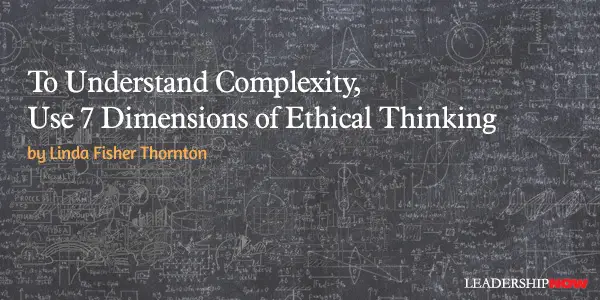
T When my book 7 Lenses was first published, I wrote a guest post about it called “The 7 Lenses of Ethical Leadership” for this blog. Since that time, 7 Lenses has gone into its second printing. This book helps leaders “see” the ethical impact of their choices through 7 Lenses of Ethical Responsibility. The lenses highlight the impact on many constituents, in the short term, and over generations, giving leaders a holistic ethical picture. As work complexity increases, the ethical thinking we use to address it must advance as well.
Every leader must weigh the financial impact of decisions. Even non-profits have to carefully manage finances and raise funds using ethical practices. All companies have to comply with laws and regulations. The higher levels of ethical thinking, though, require a much longer-term perspective and a global worldview. We must be ready to make ethical decisions when dealing with multiple stakeholders with differing interests in the outcome. In the 7 Lenses model in the book, each lens of the 7 focuses leader attention on one area of ethical leadership responsibility, and together all 7 of the lenses show leaders the combined impact of their choices. This way of thinking about ethics, in 7 dimensions, guides us to high level leadership thinking. Using better thinking we get better leadership. Concepts and ethics guidelines that live “on the shelf” aren’t practical enough to help people navigate complexity. Leaders don’t just need to think ABOUT ethics, they need to think WITH ethical values to deal with catastrophic change and respond to increasing consumer expectations for transparency and ethical business. Ethical values drive business success and they should be the basis for every choice we make. Applying them builds trust and sets the foundation for all good business relationships. Many leaders I talk with have a feeling that there is a more meaningful way of thinking and leading than what they’ve been seeing. These leaders want to have a positive impact in the workplace and make a difference in the world. Learning high level ethical thinking will not only help them handle the challenges they are already facing, it will also improve their long term social impact. We know that in the age of transparency, ethical brand value helps drive an organization’s bottom line results. How do we ensure that leaders will use the kind of thinking that leads to ethical action? We start by making ethical thinking “must have” development for leaders.  
Posted by Michael McKinney at 10:30 AM
02.07.18

What You Don't Know About Doing Great Work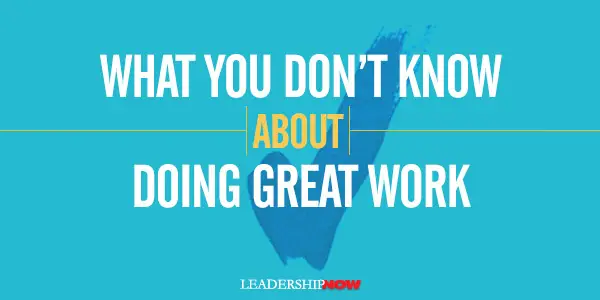
W Morten Hansen thinks the way we work is broken. Not only that but how we manage and reward work, and how our culture recognizes hard work. What we call hard work may not be our best work. In Great at Work, Hansen reports on a five-year survey of 5,000 managers and employees, including sales reps, lawyers, actuaries, brokers, medical doctors, software programmers, engineers, store managers, plant foremen, nurses and even a Las Vegas casino dealer. They discovered seven work smart practices. The first four involves mastering your own work, and the last three encompasses mastering working with others. Do Less, Then Obsess The common practice he found among the highest-ranked performers in the study was that they carefully selected which priorities, tasks, meetings, customers, ideas or steps to undertake and which to let go. They then applied intense, targeted effort on those few priorities in order to excel. He found that there were just a few key work practices related to this selectivity that accounted for two-thirds of the variation in performance among our subjects. So working smarter boils down to “maximizing the value of your work by selecting a few activities and applying intense targeted effort.” If we wish to perform better, we should examine our own selectivity process. But that’s only half of it. Not only do we pick a few priorities, but then we must “obsess over your chosen area of focus to excel.” “As few as you can, as many as you must.” Redesign Your Work Redesigning work is about creating more value for the same amount of work done. That requires an outside-in view “because it directs attention to the benefits our work brings to others. The typical inside-out view, by contrast, measures work according to whether we have completed our tasks and goals, regardless of whether they produce any benefits.” Hunt for value. Opportunities exist at “pain points.” Ways to create value include: eliminating existing activities of little value, increasing existing activities of high value, creating new activities of high value, improving quality, and doing existing activities more efficiently. Don’t Just Learn, Loop The Learning Loop means you learn while you work. Doing great work requires that you are getting feedback every day. In his study, 74 percent of the top performers reviewed their work in an effort to learn and improve. On 17 percent in the underperforming category did. Aim for Passion and Purpose You can have one without the other, but we should aim for both. “Purpose and passion are not the same. Passion is ‘do what you love,’ while purpose is ‘do what contributes.’ Purpose asks, ‘What can I give the world?’ Passion asks, ‘What can the world give me?’” With passion and purpose working for you, you bring more energy per hour of work. Passion alone doesn’t guarantee success or happiness. You may need to take a wider view of what ignites you. “Passion can also come from: success, creativity, social interactions, learning, and competence. Expand your circle of passion by tapping into these dimensions.” Become a Forceful Champion Getting our work done often hinges on our ability to gain the support of others. Getting other people on board takes more than just explaining the merits of your project. You’ve got to inspire them. The best advocates in their study master two skills in this regard. “They inspired others by evoking emotions, and they circumvented resistance by deploying smart grit.” Beyond just appealing to people’s emotions, they persevere taking into the account the perspective of the people they’re trying to influence and devising tactics that will win them over. Not just grit, but smart grit. Enlist others to help move your project forward. “Too many people try to get others to change by doing all the convincing themselves. They become lone crusaders for their efforts—and they exhaust themselves in the process.” Fight and Unite The ability to lead teams is crucial to great work. As a matter of necessity, much of this work takes place in meetings. The trick is to encourage constructive fights in meetings with cognitive diversity. Team members need to “debate the issues, consider alternatives, challenge one another, listen to minority views, scrutinize assumptions, and enable every participant to speak up without fear of retribution.” But after that is done, the team needs to come to a decision quickly and commit to a decision. You must unite. “That means people on a team have to commit to a decision—to agree to it and exert effort to implement it.” Adopt Disciplined Collaboration Hansen has identified two sins of collaboration: undercollaboration and overcollaboration. Some people talk too little, and some people talk too much across teams and departments. The goal isn’t collaboration, but better performance. He recommends disciplined collaboration. That is, “they carefully select which collaboration activities to participate in (and reject others), and follow five specific rules to make the chosen activities a success: establish a compelling reason for the collaboration, craft a unifying goal that excites, reward people for results, commit full resources or kill it, and tailor trust boosters to solve any trust issues quickly. Hansen’s research has statistically linked superior performance to the daily practice of the above seven principles. Fresh and compelling examples are used throughout to fully illustrate the seven smart work practices. 
Posted by Michael McKinney at 09:06 PM
02.01.18

First Look: Leadership Books for February 2018Here's a look at some of the best leadership books to be released in February.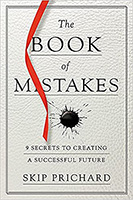 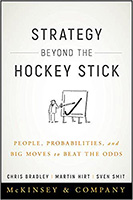 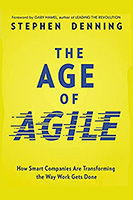 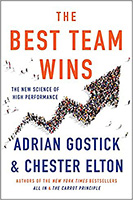 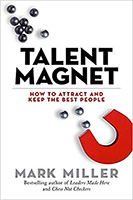
For bulk orders call 1-800-423-8273  Build your leadership library with these specials on over 39 titles. All titles are at least 40% off the list price and are available only in limited quantities. "I find television very educating. Every time somebody turns on the set, I go into the other room and read a book." — Groucho Marx
Posted by Michael McKinney at 09:52 AM
|
BUILD YOUR KNOWLEDGE


How to Do Your Start-Up Right STRAIGHT TALK FOR START-UPS 
Grow Your Leadership Skills NEW AND UPCOMING LEADERSHIP BOOKS 
Leadership Minute BITE-SIZE CONCEPTS YOU CAN CHEW ON 
Classic Leadership Books BOOKS TO READ BEFORE YOU LEAD |
| ||||||||||||||||||